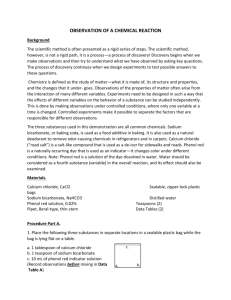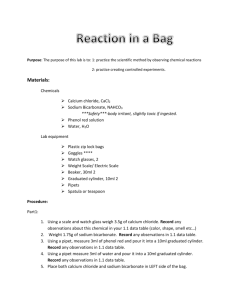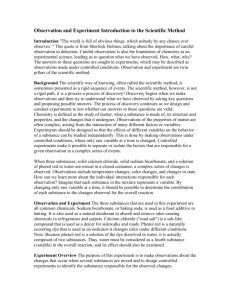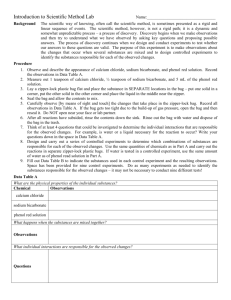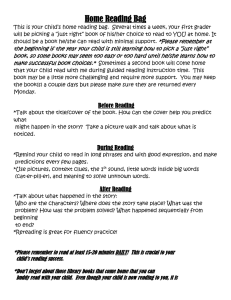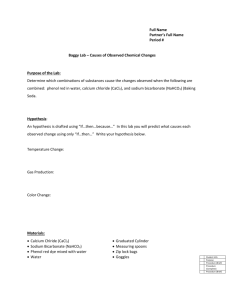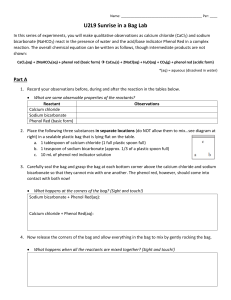Reaction in a bag lab
advertisement
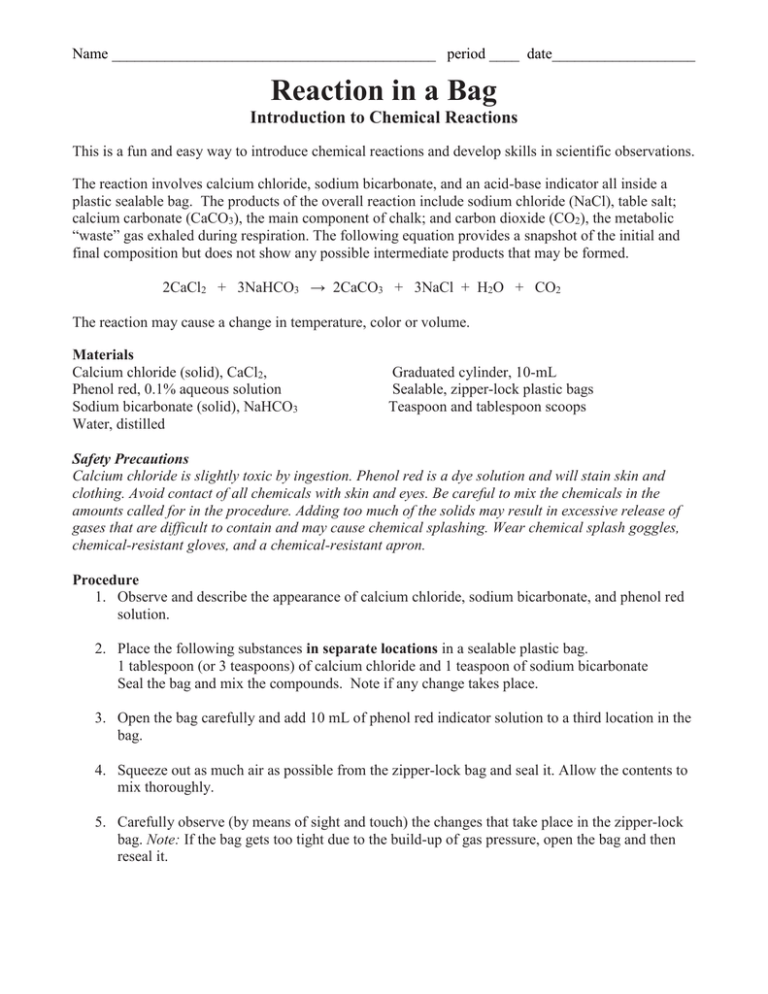
Name ___________________________________________ period ____ date___________________ Reaction in a Bag Introduction to Chemical Reactions This is a fun and easy way to introduce chemical reactions and develop skills in scientific observations. The reaction involves calcium chloride, sodium bicarbonate, and an acid-base indicator all inside a plastic sealable bag. The products of the overall reaction include sodium chloride (NaCl), table salt; calcium carbonate (CaCO3), the main component of chalk; and carbon dioxide (CO2), the metabolic “waste” gas exhaled during respiration. The following equation provides a snapshot of the initial and final composition but does not show any possible intermediate products that may be formed. 2CaCl2 + 3NaHCO3 → 2CaCO3 + 3NaCl + H2O + CO2 The reaction may cause a change in temperature, color or volume. Materials Calcium chloride (solid), CaCl2, Phenol red, 0.1% aqueous solution Sodium bicarbonate (solid), NaHCO3 Water, distilled Graduated cylinder, 10-mL Sealable, zipper-lock plastic bags Teaspoon and tablespoon scoops Safety Precautions Calcium chloride is slightly toxic by ingestion. Phenol red is a dye solution and will stain skin and clothing. Avoid contact of all chemicals with skin and eyes. Be careful to mix the chemicals in the amounts called for in the procedure. Adding too much of the solids may result in excessive release of gases that are difficult to contain and may cause chemical splashing. Wear chemical splash goggles, chemical-resistant gloves, and a chemical-resistant apron. Procedure 1. Observe and describe the appearance of calcium chloride, sodium bicarbonate, and phenol red solution. 2. Place the following substances in separate locations in a sealable plastic bag. 1 tablespoon (or 3 teaspoons) of calcium chloride and 1 teaspoon of sodium bicarbonate Seal the bag and mix the compounds. Note if any change takes place. 3. Open the bag carefully and add 10 mL of phenol red indicator solution to a third location in the bag. 4. Squeeze out as much air as possible from the zipper-lock bag and seal it. Allow the contents to mix thoroughly. 5. Carefully observe (by means of sight and touch) the changes that take place in the zipper-lock bag. Note: If the bag gets too tight due to the build-up of gas pressure, open the bag and then reseal it. Data: (Observations) Conclusions: 1. Did a noticeable change occur before the indicator solution was added? Did a noticeable change occur after the indicator solution was added? What observations did you make that tell you a chemical reaction is taking place? 2. Did a color change occur? Why or why not 3. Did a temperature change occur? Why or why not? 4. Why does the bag inflate? 5. Define reactants. What are the reactants in the chemical reaction observed in this lab? 6. Define products. What are the products in the chemical reaction observed in this lab? 7. What is the common name for sodium hydrogen carbonate?

